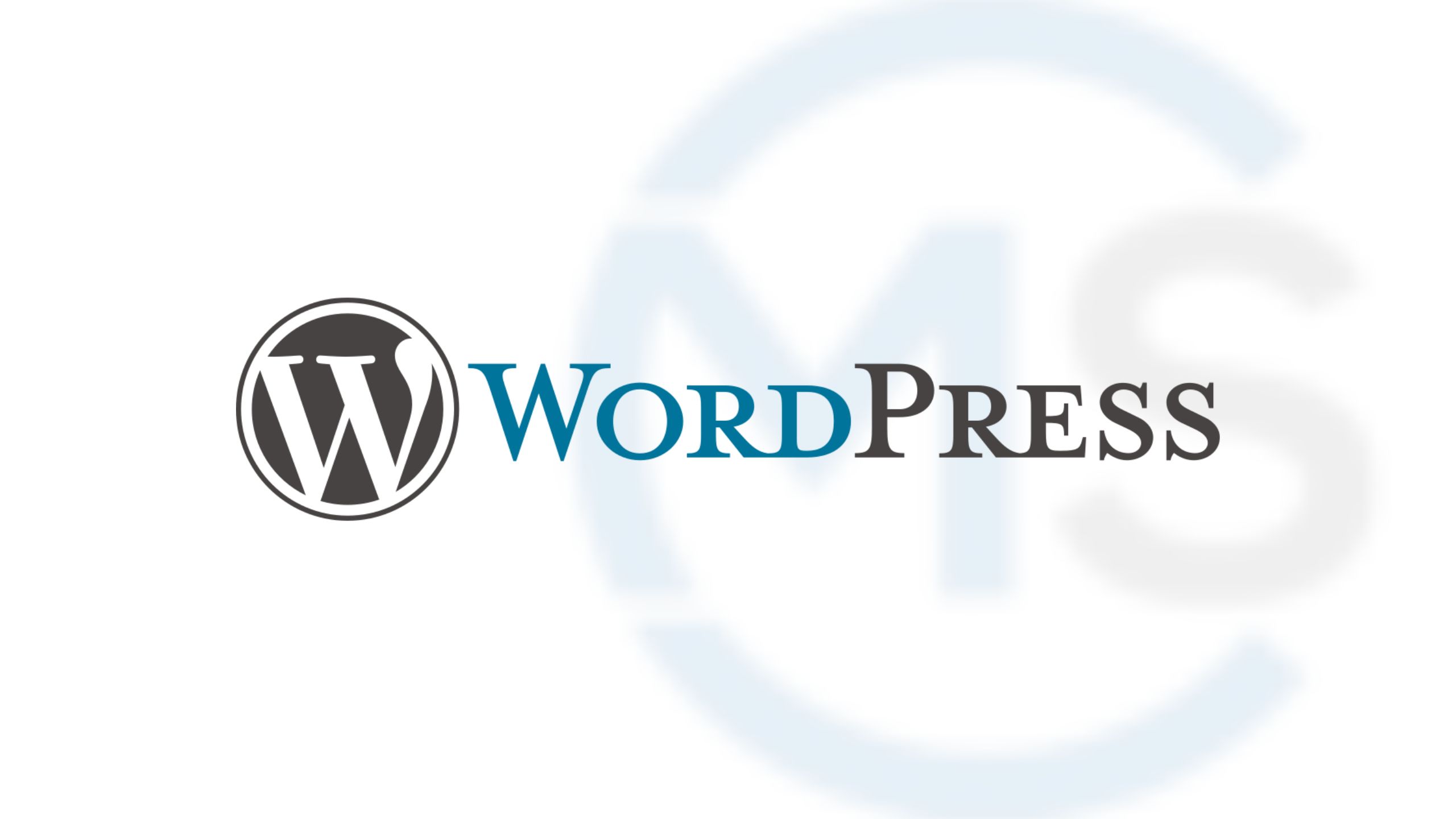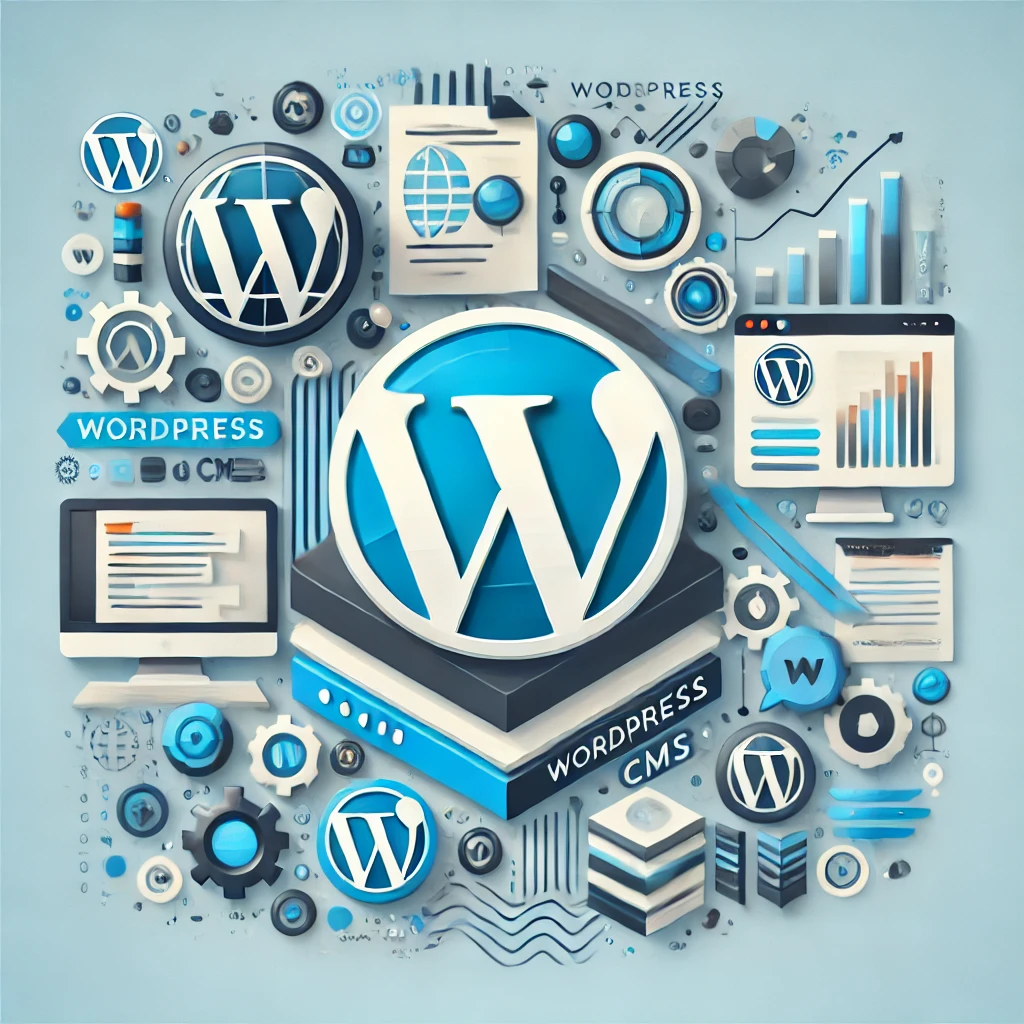WordPress
1. General Information: History and Major Versions of WordPress
WordPress was created by Matt Mullenweg and Mike Little in 2003 as a fork of b2/cafelog, a blogging software. What started as a simple tool for bloggers has since evolved into a full-fledged CMS capable of managing everything from personal blogs to large enterprise websites.
Evolution of WordPress Versions
- WordPress 1.x to 3.x: In its early versions, WordPress was primarily focused on blogging. However, with the introduction of custom post types and taxonomies in WordPress 3.0 (2010), it became a more versatile platform for different types of websites.
- WordPress 4.x: Released in 2014, WordPress 4.0 brought major improvements in the media library, content editing, and internationalization. The focus during this phase was on improving the user experience and making the platform more accessible to non-technical users.
- WordPress 5.x: Launched in December 2018, WordPress 5.0 introduced the Gutenberg block editor, a major shift from the classic editor. Gutenberg allows users to create rich content layouts using blocks, making it easier to design visually appealing pages without needing to know how to code.
- WordPress 6.x: The latest versions of WordPress, starting from 6.0 released in May 2022, have focused on further refining the block editor, improving performance, and enhancing site-wide editing capabilities. The goal is to make WordPress even more flexible and user-friendly for both developers and end-users.
2. Features of WordPress 5.x and 6.x, and What’s New in the Latest Versions
Key Features of WordPress 5.x and 6.x
- Gutenberg Block Editor: The Gutenberg editor revolutionized content creation in WordPress by introducing a block-based approach. Users can easily add, rearrange, and style content blocks, such as text, images, videos, and widgets, without any coding knowledge.
- Themes and Plugins: WordPress has an extensive repository of free and premium themes and plugins. Themes control the look and feel of your site, while plugins add functionality. With over 50,000 plugins available, you can extend WordPress to do almost anything, from SEO optimization to e-commerce.
- Custom Post Types and Taxonomies: WordPress allows you to create custom post types and taxonomies, enabling you to manage different types of content (e.g., products, portfolios, events) in a structured way.
- Site Health Tool: Introduced in WordPress 5.2, the Site Health tool helps you monitor your site’s performance and security by providing recommendations and alerts.
- Multisite: WordPress Multisite is a feature that allows you to run multiple WordPress sites from a single installation. This is particularly useful for businesses and organizations that need to manage multiple sites with similar configurations.
What’s New in the Latest Versions?
- Full Site Editing (FSE): WordPress 6.x has expanded the block editor’s capabilities to include full site editing. FSE allows you to design and customize your entire site using blocks, including headers, footers, and other global elements, making the design process more intuitive and flexible.
- Template Editor: The Template Editor is part of FSE, allowing users to create and customize templates for different types of content directly from the WordPress dashboard. This feature empowers users to design unique layouts for posts, pages, and custom post types without needing a theme developer.
- Global Styles and Theme JSON: WordPress 6.x introduced Global Styles, which allow you to define and manage your site’s visual styles (colors, typography, etc.) across all blocks. The Theme JSON file helps developers manage theme settings and styles programmatically, making theme development more efficient.
- Performance Improvements: The latest versions of WordPress have focused heavily on performance enhancements, including improvements in block editor speed, lazy loading of images, and more efficient database queries, resulting in faster loading times.
3. Migrating to the Latest Version of WordPress
Upgrading to the latest version of WordPress is generally straightforward, but it requires careful planning, especially for larger sites with custom themes and plugins.
Steps for Migration
- Backup Your Site: Before upgrading, always create a full backup of your site, including the database and all files. This ensures that you can restore your site if something goes wrong during the upgrade.
- Check Plugin and Theme Compatibility: Ensure that all your plugins and themes are compatible with the latest version of WordPress. Visit the plugin and theme developers’ websites or check the WordPress repository for compatibility updates.
- Update Plugins and Themes: Before upgrading WordPress itself, update all your plugins and themes to their latest versions. This minimizes the risk of conflicts after the WordPress update.
- Test in a Staging Environment: If possible, test the upgrade in a staging environment that mirrors your live site. This allows you to identify and fix any issues before applying the update to your live site.
- Perform the Upgrade: Once you’ve tested everything, you can proceed with upgrading WordPress on your live site. This can be done directly from the WordPress dashboard.
- Test Your Site: After the upgrade, thoroughly test your site to ensure that all features are working correctly. Pay particular attention to custom functionality, forms, and e-commerce features.
Challenges of Migration
- Plugin Conflicts: Some plugins may not be immediately compatible with the latest version of WordPress, leading to potential conflicts or broken functionality.
- Theme Issues: Custom themes may require updates to support new WordPress features, particularly those related to the block editor and full site editing.
- Downtime: Although WordPress updates are generally quick, there is a risk of downtime during the upgrade process, especially if issues arise. It’s important to schedule the upgrade during low-traffic periods.
4. Plugins That Expand Capabilities and Reduce Development Time
One of the most powerful aspects of WordPress is its extensive library of plugins that can enhance your site’s functionality.
Essential WordPress Plugins
- Yoast SEO: Yoast SEO is the most popular SEO plugin for WordPress. It helps you optimize your content for search engines, manage metadata, and create XML sitemaps.
- WooCommerce: WooCommerce is the leading e-commerce plugin for WordPress, allowing you to turn your site into a fully functional online store. It supports various payment gateways, shipping options, and inventory management features.
- Elementor: Elementor is a drag-and-drop page builder plugin that allows you to create custom layouts and designs without writing any code. It integrates seamlessly with the block editor and offers a wide range of widgets and templates.
- WP Rocket: WP Rocket is a premium caching plugin that helps improve your site’s loading speed by implementing various performance optimization techniques, including caching, lazy loading, and database optimization.
- Advanced Custom Fields (ACF): ACF is a powerful plugin for creating custom fields and meta boxes, allowing you to add and manage additional content fields for posts, pages, and custom post types.
- Wordfence Security: Wordfence is a comprehensive security plugin that offers firewall protection, malware scanning, and login security features to protect your site from attacks.
Reducing Development Time with Plugins
Plugins can significantly reduce development time by providing pre-built solutions for common functionality. Instead of coding custom features from scratch, you can leverage the extensive plugin library to add complex features to your site quickly and efficiently. However, it’s important to choose plugins from reputable developers and keep them updated to ensure compatibility and security.
5. WordPress for Large Websites and Enterprise Solutions
While WordPress is often associated with small blogs and websites, it is also capable of powering large, complex websites and enterprise solutions.
Scalability
WordPress can scale to handle large amounts of traffic and content, making it suitable for high-traffic websites, e-commerce stores, and enterprise applications. By optimizing your server environment, using caching solutions like WP Rocket, and employing a content delivery network (CDN), WordPress can handle millions of visitors per month.
Enterprise-Level Features
- Multisite: WordPress Multisite allows enterprises to manage multiple websites from a single WordPress installation. This feature is ideal for organizations with multiple brands, regional sites, or internal networks.
- Custom Post Types and Taxonomies: For enterprise-level content management, WordPress’s support for custom post types and taxonomies allows for the organization of complex data structures. This makes WordPress a flexible solution for managing different types of content, from product catalogs to employee directories.
- API Integrations: WordPress’s REST API allows for seamless integration with other platforms and services, enabling enterprises to connect WordPress with CRM systems, marketing automation tools, and other enterprise software.
Case Studies
Many large organizations and brands, including The New Yorker, Sony Music, and the White House, use WordPress to power their websites. These case studies demonstrate WordPress’s ability to handle high-traffic websites and complex content management needs.
6. Developing a Website on WordPress and Creating Unique Plugins
Developing a website on WordPress involves several key steps, from planning and design to development and deployment.
Planning and Design
- Requirements Gathering: The first step in developing a website on WordPress is to gather requirements. This includes defining the site’s purpose, target audience, and key features.
- Design: Once the requirements are clear, the next step is to design the website. This includes creating wireframes, mockups, and selecting a theme that aligns with your brand.
Development
- Installation and Configuration: Installing WordPress is straightforward, but configuring it to meet your specific needs requires careful planning. This includes setting up custom post types, taxonomies, and user roles.
- Customization: Customizing WordPress may involve developing custom plugins, creating custom themes, and integrating third-party services. The use of the Gutenberg block editor and page builders like Elementor makes it easier to create custom designs without affecting the core code.
- Plugin Development: If you need features that are not available in existing plugins, you can develop custom plugins. This requires knowledge of PHP, WordPress hooks, and the WordPress API.
Testing and Deployment
- Testing: Before going live, it’s essential to thoroughly test the website. This includes checking for compatibility across different browsers and devices, testing custom plugins, and ensuring that all features work as expected.
- Deployment: Once testing is complete, the website can be deployed to the live server. It’s important to monitor the website closely after deployment to ensure everything runs smoothly.
Maintenance and Updates
Regular maintenance is crucial for keeping your WordPress site secure and up to date. This includes applying security patches, updating plugins, and optimizing performance. Staying on top of updates ensures that your site remains competitive and secure.

10 Common Questions and Answers About WordPress (FAQ)
1. What is WordPress?
WordPress is an open-source content management system (CMS) used to build and manage websites. It is known for its ease of use, flexibility, and extensive plugin ecosystem.
2. Is WordPress free?
Yes, WordPress is free to download and use. However, you may need to pay for hosting, premium themes, or plugins.
3. What are the system requirements for WordPress?
WordPress requires a web server with PHP 7.4 or higher, a MySQL or MariaDB database, and an HTTPS connection for secure transactions.
4. How easy is it to customize WordPress?
WordPress is highly customizable, and many customization options can be implemented without coding. For more advanced customization, you can use themes, plugins, and custom code.
5. Can I use WordPress for a large website?
Yes, WordPress can scale to handle large websites with high traffic volumes. It is used by many large organizations and enterprises.
6. What plugins should I install on a new WordPress site?
Essential plugins for a new WordPress site include Yoast SEO, WooCommerce (for e-commerce), Elementor, WP Rocket, and Wordfence Security.
7. How do I optimize WordPress for SEO?
WordPress includes built-in SEO tools and plugins like Yoast SEO that help optimize URLs, metadata, and content for search engines.
8. Is WordPress secure?
Yes, WordPress is secure, but it’s important to keep the platform and all plugins updated. Using strong passwords, enabling two-factor authentication, and regularly applying security patches are essential practices.
9. Can I migrate my site from another CMS to WordPress?
Yes, it is possible to migrate from other CMS platforms to WordPress. Several migration tools and services can help transfer your content, users, and data to WordPress.
10. Where can I find support for WordPress?
Support for WordPress is available through the official community, forums, documentation, and professional WordPress developers. Paid support services are also available if needed.
Conclusion
WordPress is a versatile, powerful, and user-friendly CMS that can be used to build a wide range of websites, from simple blogs to complex enterprise solutions. By understanding its features, leveraging its extensive plugin ecosystem, and staying up to date with the latest versions, you can create a unique and effective online presence with WordPress. Whether you’re new to WordPress or looking to upgrade your existing site, this comprehensive guide provides the information you need to make informed decisions and get the most out of this powerful CMS.

